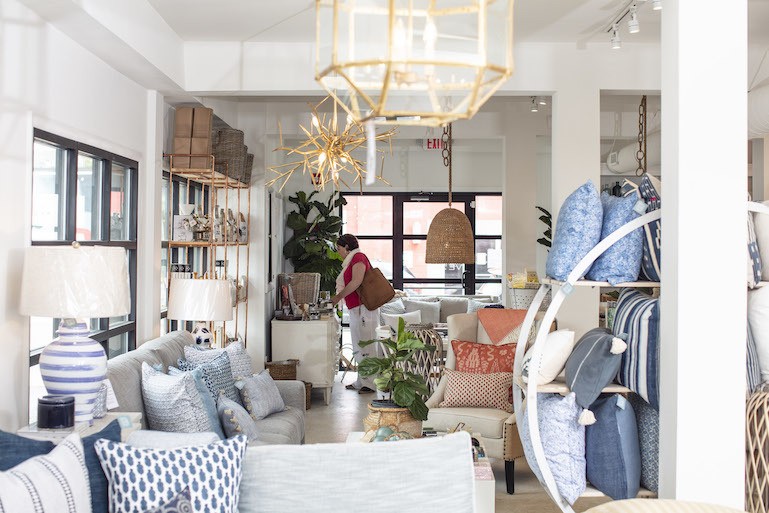
Retail Therapy: How To Increase Sales Per Square Foot
There are many metrics you can use to make sure your retail store is financially healthy, and one of the most popular within the industry is sales per square foot.
We’ll tell you how to increase sales per square foot, and how to use this number to increase profits at your retail establishment.
How To Determine Sales Per Square Foot
In what might be one of the simplest equations of all time, sales per square foot is calculated by dividing your annual sales by the square footage of your store:
Sales Per Square Foot = Annual Sales ÷ Number of Square Feet
If your retail space is 800 square feet, and you make $40,000 a year in gross profit, your sales per square foot in dollars is $50. Remember to only count retail selling space in this equation, so you would exclude bathrooms, stockrooms, and the like.
Once you calculate your sales per square foot, you want to make sure that number at your store is consistently rising, or at least not falling. It is just one way to measure the financial health of your store over a specific time period.
You probably have an omnichannel approach to retail, where you also sell your wares online. In order to increase your sales per square foot, though, you’ll simply need to increase in-store sales in your brick-and-mortar retail store. Here are a few ideas.
Put Shoppers In The Right Mindset Right Away
Store layout matters. Do you have inventory for sale by your front door? Retail experts recommend placing small but popular items — like drinks or newspapers — immediately inside your store to encourage your customers to grab an item as soon as they walk through the door. Once a shopper has an item in hand, they are more likely to buy more items.
On which side should your popular merchandise live? The right side, because shoppers are more likely to turn right when they walk into a store. Your check-out counter should be located to the left of the entrance, which is a natural exit point for shoppers.
SEE ALSO: How To Increase Sales in Retail
Add an Expensive Option to Your Inventory
Part of successful merchandising is using the psychology of shoppers to increase retail sales.
Most customers want to feel like they are getting a good deal, and the best way to do that is to offer them a low range, middle range, and an upper range in the same store—even if you know the expensive item will not be purchased by your target customer base. More guests will purchase the mid-priced option, which will raise your sales per square foot.
You have probably experienced this phenomenon yourself whenever you order wine at a restaurant. Over time, this boosts total revenue.
But Don’t Have Too Many Options
Paralysis of choice can cause shoppers to leave your retail store without buying anything. If you have a party supply section, don’t stuff it with every imaginable shade of wrapping paper. Instead, consider offering fewer wrapping paper options, and placing complementary party supplies in the same section: balloons, paper plates, and the like.

Tap Into an Abstract Mindset
Creating sections dedicated to actions or occasions, instead of stuffing a store with as much inventory as possible, is attractive to customers in an abstract mindset. This type of person is thinking broadly about a need — like wedding supplies or a toy for a toddler’s birthday party — and is paying less attention to detail.
A consumer in this mindset is more likely to purchase complementary products that will also help solve their problem, so be sure to offer them to boost your sales. If they are thinking about gardening, they may grab gardening gloves to go along with their tools if the gloves are within view.
The other major way of thinking is a concrete mindset, which pays intense attention to detail. In today’s retail industry, someone with this mindset is more likely to spend 45 minutes on Amazon finding the perfect solution, thereby never even stepping foot in a store, so we suggest attracting and converting shoppers in an abstract state of mind.
SEE ALSO: Everything You Need to Know About Retail Analytics
Distract Shoppers From Prices
When you notice that a customer in your store is intently studying prices, that may be the perfect time to ask them if they need help finding anything.
By distracting them, either in person or by using a design detail such as a mirror, the customer is more likely to stop focusing so much on price and therefore purchase a higher-priced item.
Over time, this strategy will help you raise your retail profits.
Analyze Your Sales Data
Numbers don’t lie, especially in this industry. Keep analyzing your retail sales data to make informed choices. You don’t need to pay extra for detailed sales reporting. A point of sale system like ShopKeep includes sales data — along with profit-boosting features like customer loyalty and gift cards — that help you craft smart retail strategies that increase the revenue and conversion rate at your store.
Want to try ShopKeep for yourself?
Just answer a few easy questions.
Need help finding the right point of sale?
Just complete the form. We’ll call you right back to explain how ShopKeep can work for you.
Hit the ground running.Sprinting, in fact!
Read our free, comprehensive guide, Small Business 101, to learn all you need to know about starting a thriving business.

